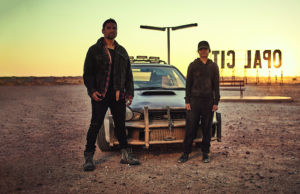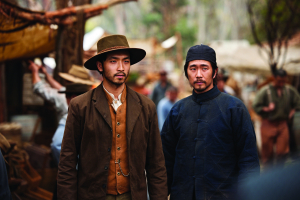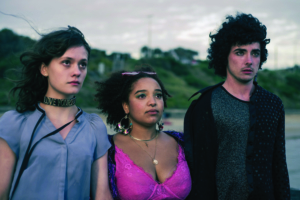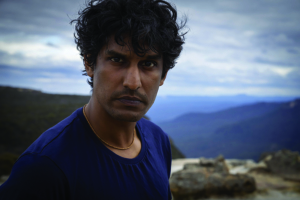When it comes to experiencing the large-scale immersive and interactive works that have increasingly become a significant part of international film festivals such as Sundance, Tribeca, IDFA (International Documentary Film Festival Amsterdam) and CPH:DOX (Copenhagen International Documentary Film Festival), Australia is at a geographical disadvantage. Often comprising installation, cutting-edge technology and performance, such works rarely reach this part of the world due to prohibitive travel costs. Instead, Australian film festivals tend to have to make do with headset-based VR projects, which are relatively cheap to stage. Although some of these are phenomenal, it is unfortunate not to have the opportunity to experience some of the more groundbreaking immersive works that tour festivals in Europe and North America.
Arts festival Adelaide Fringe and its director, Heather Croall (former head of Sheffield DocFest), have demonstrated an appetite over the past few years for programming works that employ emerging technology to tell stories, even though these have mostly been smaller projects. In 2020, Fringe invited UK duo Mark Atkin and Tom Millen (collectively known as Crossover Labs) to bring their Electric Dreams event to Adelaide as a package featuring a handful of immersive works and a one-day conference. Two years later, Electric Dreams returned with three projects in tow – Goliath: Playing with Reality, Anthropocene in C Major and Volo: Dreams of Flight – as well as a day of presentations, both virtual and IRL. Alongside the Electric Dreams program, Fringe reprogrammed Blast Theory’s Rider Spoke and presented the new drone-art commission Sky Song.[1]Although I didn’t have the opportunity to experience Sky Song, this work – the world’s first drone-art show of its kind, and a collaborative effort involving UK-based art collective Celestial and First Nations musicians, dancers and storytellers – may well present a prototype for future immersive-experience collaborations. See <https://celestial.show/work/adelaide-fringe-festival/>, accessed 11 May 2022.
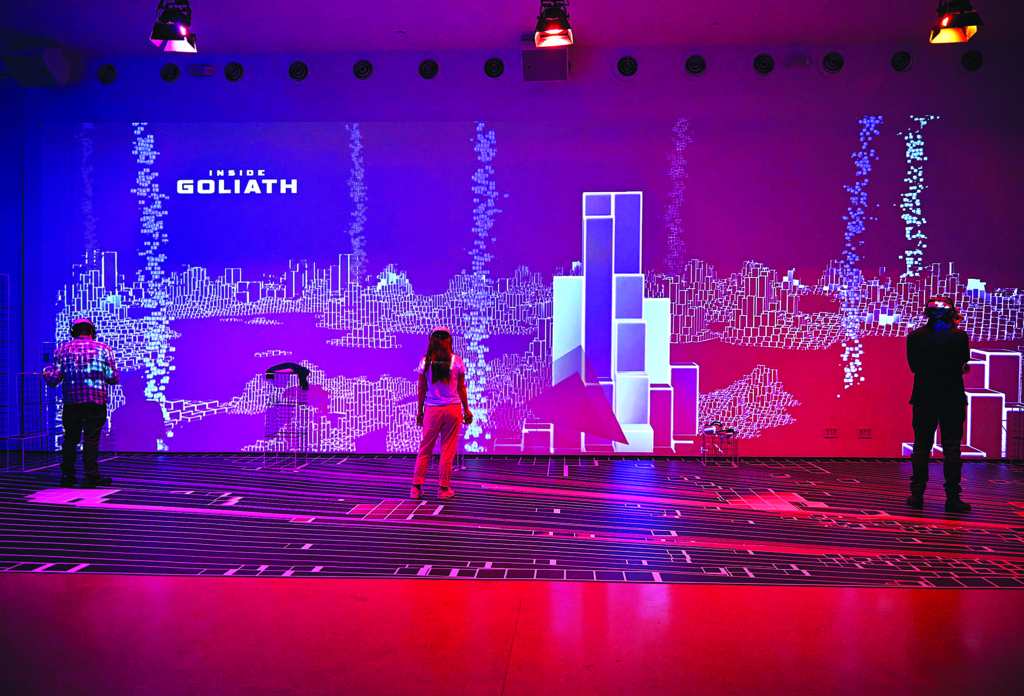
While both overhyped and overused, the term ‘immersive’ still provides a useful descriptor for the type of liminal experiences that are seen across cultural spaces. Digital media theorist Janet H Murray likens being immersed in this way to the experience of being in water – ‘a sense of being contained within a space or state of mind that is separate from ordinary experience’ and that is ‘more focused and absorbing’.[2]Janet H Murray, ‘Glossary’, Janet H Murray author blog, <https://inventingthemedium.com/glossary/#immersion>, accessed 6 April 2022. Sound artist and composer Duncan Speakman, however, critiques preoccupations with immersion and its supposed aim of removing an audience from the world. Instead, he argues that creating a sense of presence with one’s surroundings might be more connective and restorative.[3]‘In Conversation with Duncan Speakman’, YouTube, 8 April 2021, <https://www.youtube.com/watch?v=7Lyj4TF6Nec>, accessed 5 April 2022.
Whether through creating presence or immersion, this small selection of works at Adelaide Fringe invited audiences into storytelling encounters with schizophrenia, the climate emergency, personal memories, First Nations cultures and frivolous joy – revealing the multi-prismatic potential of emerging technologies.
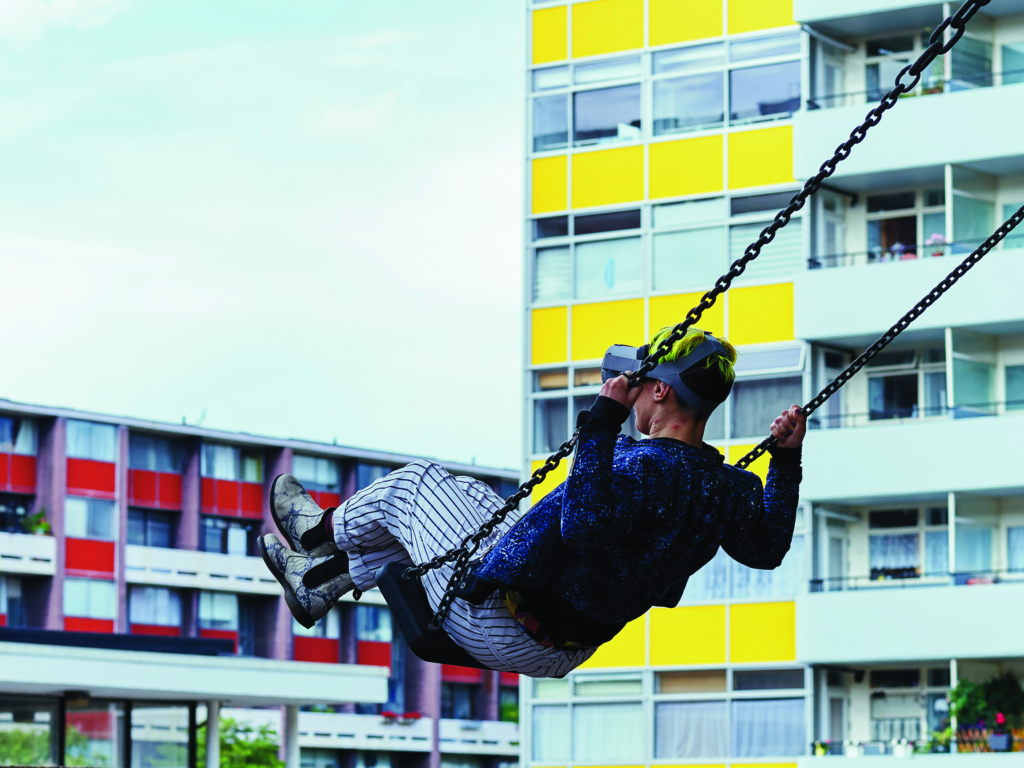
Sharing lived experience
While early discussions of VR revolved around Chris Milk’s much-cited description of the medium as an ‘empathy machine’,[4]Chris Milk, ‘How Virtual Reality Can Create the Ultimate Empathy Machine’, TED, March 2015 <https://www.ted.com/talks/chris_milk_how_virtual_reality_can_create_the_ultimate_empathy_machine>, accessed 2 April 2022. the form, and scholarship related to it, continues to evolve. On the Meta Quest website, popular VR headset producer Reality Labs – formerly known as Oculus – promotes the many possibilities of the technology for good, including health applications, understanding other cultures and cultural heritage.[5]See <https://www.oculus.com/vr-for-good/>, accessed 11 May 2022. Anagram’s Goliath: Playing with Reality is a collaboration between UK-based creative studio Anagram and France’s Floréal Films as part of the Oculus VR for Good program.
Situated over the course of the festival in a pop-up installation inside the South Australian Museum, Barry Gene Murphy and May Abdalla’s Goliath: Playing with Reality demonstrates not just the evolution of VR as a technical form, but also the power of storytelling. Winner of the Grand Jury Prize for Best VR Immersive Work at the 2021 Venice International Film Festival, as well as multiple other international awards since, the twenty-five-minute VR film immerses the participant in the life of a man living with schizophrenia. Although narrated in parts by Tilda Swinton, the story very much belongs to the titular (pseudonymous) documentary subject: he recounts his experience of the condition, which incorporated years of isolation in psychiatric institutions until he was introduced to multiplayer videogames, through which he found others like him and a sense of community.
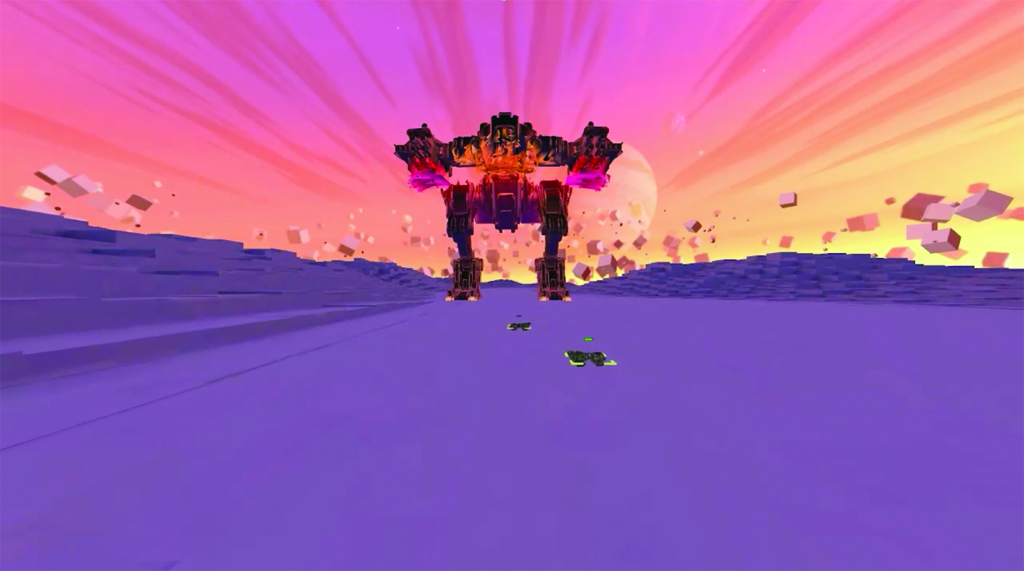
The experience of having schizophrenia is undoubtedly a deeply personal and difficult one to communicate. Yet Goliath both considers the ethics of representation and takes a playful approach to audiovisual language and virtual space. The subject matter is not only complemented but also enhanced through formal strategies: in one scene, which demonstrates the different perceptions that medical experts have of psychosis, the participant is invited to use the hand controllers to guide those audio recordings and select which ones to listen to; options include overlapping, fading in and out, and mixing the audio as it arises in animated streams from the bottom of the virtual space. This technique is powerful, demonstrating the differing understandings of schizophrenia while also emulating the experience of hearing a cacophony of voices. In her presentation at the Electric Dreams conference, Abdalla said that many people with schizophrenia have wished their doctors could see Goliath so they would have more insight into the lived experience of having the condition.
While this was a ticketed presentation, Goliath is also available as a free download for the Oculus headset, and has been used in training packages for police and health practitioners. At a running time of twenty-five minutes, Goliath might seem long for a VR work; however, the dizzying range of visual and aural techniques manage to be engaging and thought-provoking while never feeling gratuitous. As Abdalla outlined at the conference, it was essential for her in developing the experience that, although gaming plays an important part in the story, the finished work itself wouldn’t constitute a game in any sense.
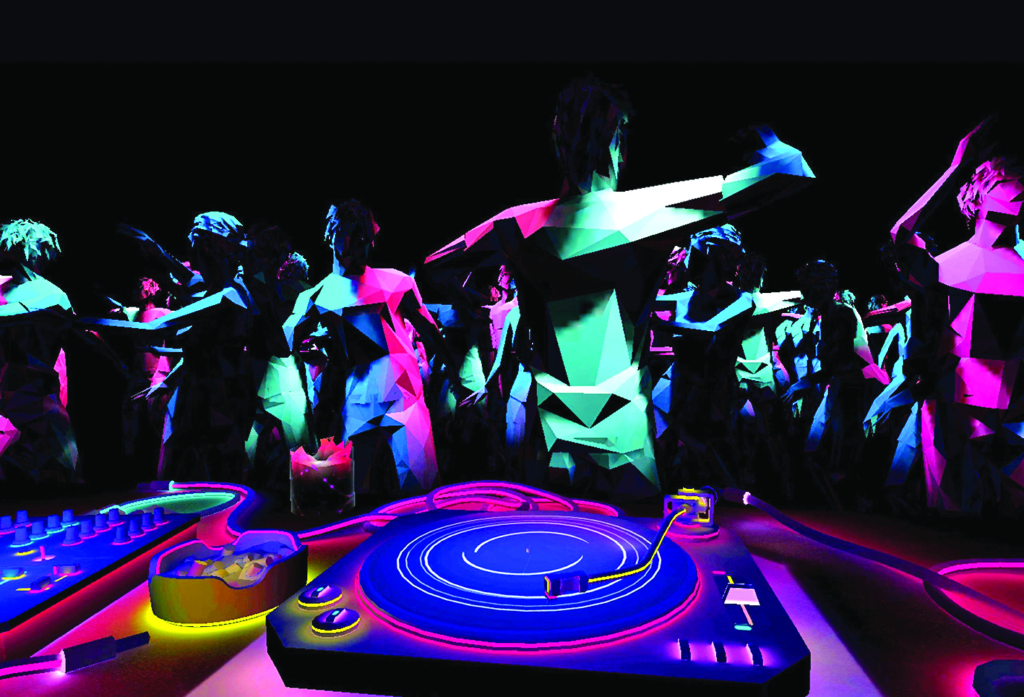
Thrillseekers wanted
Whereas Goliath uses the medium of VR to communicate the experience of schizophrenia and the restorative power of finding community, Volo: Dreams of Flight makes no illusions about its thrillseeking intentions. Its four experiences – ‘Glider’, ‘Helical Screw’, ‘Ornithopter’ and ‘Parachute’ – are each based on Leonardo da Vinci’s flying machines, and each simulates a different sensation of flight. Situated on the front lawns of the Museum, the makeshift installation allows participants to propel themselves on sturdy swings, which in turn activate an animated VR experience.
Each of the short films runs for about four minutes, which creator Brendan Walker suggests is the optimal time to maximise enjoyment before interest wanes. This is not just guesswork: in his presentation at the conference, Walker, who refers to himself as ‘the world’s only thrill engineer’,[6]Brendan Walker, quoted in Gary Ryan, ‘The Way I Work: Brendan Walker’, Big Issue North, 8 May 2018, <https://www.bigissuenorth.com/features/2018/05/way-work-brendan-walker/>, accessed 9 May 2022. revealed the substantial research he has devoted to the psychophysiology of thrillseeking, a pursuit that has led to the extensive experiments and contraptions produced by Thrill Laboratory, an organisation of artists, technologists, scientists and designers directed by Walker that is dedicated to creating exhilarating experiences. Given the brevity of Volo, and with few expectations other than the hope of not feeling nauseous, it’s easy to suspend judgement – which is part of the appeal.

Sonifying the Anthropocene
Tackling the soberer subjects of climate change, capitalism and the legacy of colonialism, Jamie Perera’s Anthropocene in C Major translates data from the past 12,000 years into musical sounds in an attempt to dematerialise their power. Although the term ‘Anthropocene’ is sometimes applied to a very recent time period (with some geologists situating its beginning as late as the mid twentieth century[7]See, for example, Meera Subramanian, ‘Anthropocene Now: Influential Panel Votes to Recognize Earth’s New Epoch’, Nature, 21 May 2019 <https://www.nature.com/articles/d41586-019-01641-5>, accessed 9 May 2022.), it is also considered by other theorists to run parallel with the Holocene, which began at the end of the last Ice Age – the time span Perera’s artwork covers.[8]See Robinson Meyer, ‘Geology’s Timekeepers Are Feuding’, The Atlantic, 21 July 2018, <https://www.theatlantic.com/science/archive/2018/07/anthropocene-holocene-geology-drama/565628/>, accessed 10 May 2022.
However one seeks to define it, the dramatic escalation of human impact on the Earth and its climate that has been brought about by extractive processes and colonisation is undeniable. Perera’s work is an attempt to grapple with climate change as a ‘hyperobject’, a term coined by ecological thinker Timothy Morton.[9]See Timothy Morton, The Ecological Thought, Harvard University Press, Cambridge, MA & London, 2010. For Morton, hyperobjects are objects that transcend our ‘limited, fixated, self-orientated frameworks’;[10]ibid., p. 19. concepts like global warming, capitalism or polystyrene are all hyperobjects because of the immensity of their scale, longevity and scope. For Morton, hyperobjects are also ‘directly responsible for […] the end of the world’.[11]Timothy Morton, Hyperobjects, University of Minnesota Press, Minneapolis, 2013, p. 7. Beginning with the concept of the Anthropocene as a hyperobject, Perera sonifies such data as tropical forest loss, global oil consumption and population growth as a way to comprehend and unpick ecological grief, both personal and collective. For each strand of data, Perera assigns an instrument; when combined, they create a dystopian symphony – the outcome of which is both resonant and melancholy. For Perera, sonification allows stories to be told in different ways that can bypass the visual, affecting the listener at a deeper and more primal level.[12]See Jamie Perera, ‘Notes on Sonification’, ‘Journal’, Jamie Perera artist website, August 2017, <https://www.jamieperera.com/blog#NotesonSonification>, accessed 12 March 2022.
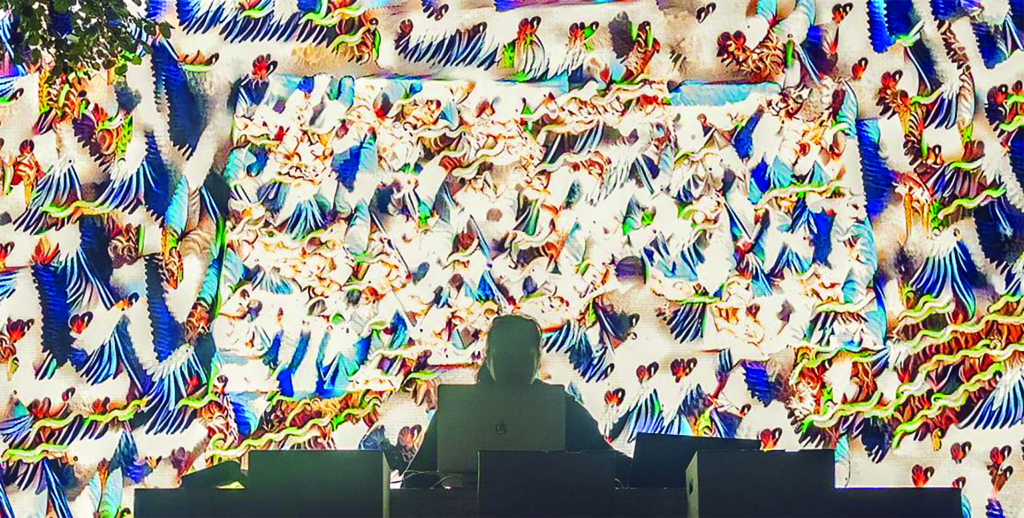
South Australian Museum’s Pacific cultures gallery, where the visitor is surrounded by 3000-odd spears, ornaments, masks and other objects, made for an uncanny listening space for Anthropocene. As I sat on a hard folding chair, I longed for a more comfortable place to fully listen without distractions. The accompanying visuals felt simultaneously necessary – given the formal orientation of the seating – and superfluous in their reliance on what’s in the archive (this footage appears to have been predominantly sourced from the Internet Archive and the Prelinger Archives[13]A collection of public-domain films that document and reflect American history.).
I also came to this work having previously seen it performed online as part of CPH:DOX 2021. Being adapted for a virtual experience during lockdown allowed the previous iteration a level of audience participation that was absent here. Throughout this earlier performance, the audience was prompted to respond through their keyboards to questions about what they feared, what they wanted to see or what they desired. These questions evoked an internal reflection as well as a meditation on the past, present and future, and also provided inspiration for the visuals that would be displayed on screen. The feedback loop made available through the online version deftly demonstrated that, just as the Anthropocene has been shaped by human behaviour, so too was the work – a point that is both obvious and worthy of being reminded about.

Rider’s speak
To what extent the three works above might bear a relationship to documentary is debatable. However, each of them plays with and expands on representations of reality. The incorporation of emerging technologies into documentary has further allowed reality to not only be represented but also constructed.[14]See Judith Aston & Sandra Gaudenzi, ‘Interactive Documentary: Setting the Field’, Studies in Documentary Film, vol. 6, no. 2, 2012, p. 133. In Brighton, UK, collective Blast Theory’s Rider Spoke, the work is co-created through the simple act of taking up the invitation to participate.
Attaching an iPhone to a bike, the participant heads off on the city streets looking for a place to hide and leave an audio description of themselves. Further prompts elicit memories, which are then left as recordings for subsequent participants. It is only after the rider has spoken a memory that they are able to listen to others. As a newcomer to Adelaide, and without a prescribed route, I was afforded the opportunity to drift; while the recorded memories I encountered were often not very interesting, the prompting of recollections of places and people in my own life made it a worthwhile experience. As immersive and interactive media researchers Judith Aston and Sandra Gaudenzi suggest, the digital interface and encounter with the geolocational space of works like Rider Spoke ‘[creates] real-time lived experiences that bring the participant in a position of spatial and personal discovery’.[15]ibid.
Rider Spoke, now fifteen years old, has become something of a classic of participatory media art, despite the subsequent ubiquity of portable screen devices. Although there are more sophisticated uses of mobile media available now – which might include geolocational software and augmented reality – the ongoing success of Rider Spoke has as much to do with what the participant brings to it as what the work provides: the questions that the artwork asks have the potential to evoke certain memories that form a significant aspect of the experience.
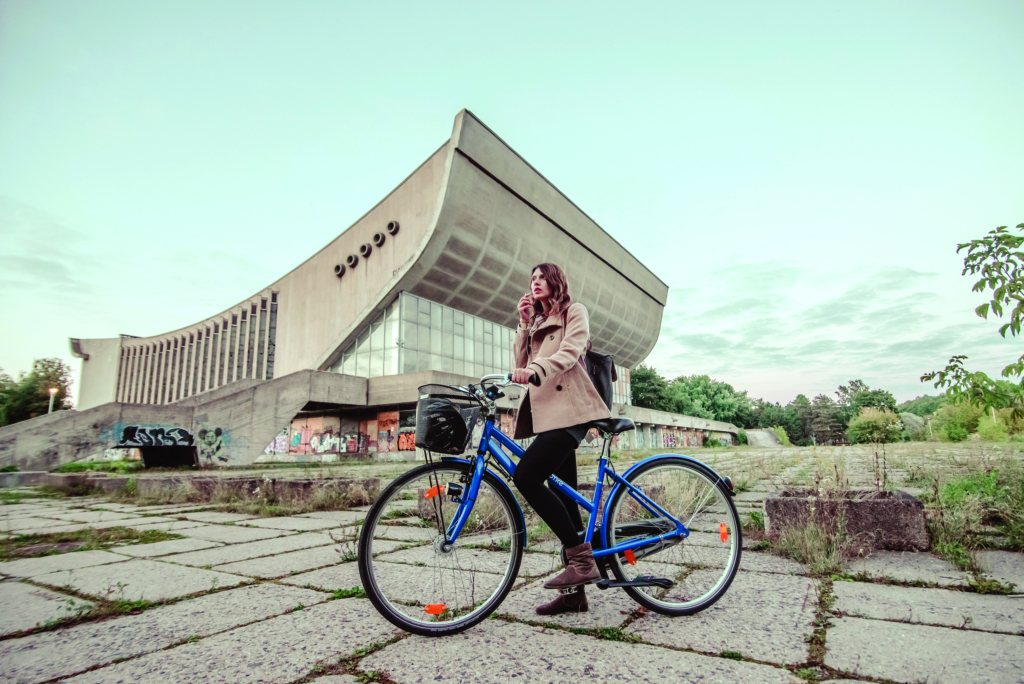
Future dreams
Attending these events at Adelaide Fringe 2022 prompted a reflection on the many virtual events I experienced over the past two years. While the above projects reflect only a small selection of those produced over this time and are relatively small in scale – and therefore easier to tour – there is reason to hope that they might open up dialogues around what immersive storytelling can be. They also draw attention to what opportunities might exist in current funding structures for the production of local immersive, mixed-reality and interdisciplinary storytelling. We may miss out on work due to geographical distance, but there’s no reason why we can’t produce our own.
Endnotes
| 1 | Although I didn’t have the opportunity to experience Sky Song, this work – the world’s first drone-art show of its kind, and a collaborative effort involving UK-based art collective Celestial and First Nations musicians, dancers and storytellers – may well present a prototype for future immersive-experience collaborations. See <https://celestial.show/work/adelaide-fringe-festival/>, accessed 11 May 2022. |
|---|---|
| 2 | Janet H Murray, ‘Glossary’, Janet H Murray author blog, <https://inventingthemedium.com/glossary/#immersion>, accessed 6 April 2022. |
| 3 | ‘In Conversation with Duncan Speakman’, YouTube, 8 April 2021, <https://www.youtube.com/watch?v=7Lyj4TF6Nec>, accessed 5 April 2022. |
| 4 | Chris Milk, ‘How Virtual Reality Can Create the Ultimate Empathy Machine’, TED, March 2015 <https://www.ted.com/talks/chris_milk_how_virtual_reality_can_create_the_ultimate_empathy_machine>, accessed 2 April 2022. |
| 5 | See <https://www.oculus.com/vr-for-good/>, accessed 11 May 2022. |
| 6 | Brendan Walker, quoted in Gary Ryan, ‘The Way I Work: Brendan Walker’, Big Issue North, 8 May 2018, <https://www.bigissuenorth.com/features/2018/05/way-work-brendan-walker/>, accessed 9 May 2022. |
| 7 | See, for example, Meera Subramanian, ‘Anthropocene Now: Influential Panel Votes to Recognize Earth’s New Epoch’, Nature, 21 May 2019 <https://www.nature.com/articles/d41586-019-01641-5>, accessed 9 May 2022. |
| 8 | See Robinson Meyer, ‘Geology’s Timekeepers Are Feuding’, The Atlantic, 21 July 2018, <https://www.theatlantic.com/science/archive/2018/07/anthropocene-holocene-geology-drama/565628/>, accessed 10 May 2022. |
| 9 | See Timothy Morton, The Ecological Thought, Harvard University Press, Cambridge, MA & London, 2010. |
| 10 | ibid., p. 19. |
| 11 | Timothy Morton, Hyperobjects, University of Minnesota Press, Minneapolis, 2013, p. 7. |
| 12 | See Jamie Perera, ‘Notes on Sonification’, ‘Journal’, Jamie Perera artist website, August 2017, <https://www.jamieperera.com/blog#NotesonSonification>, accessed 12 March 2022. |
| 13 | A collection of public-domain films that document and reflect American history. |
| 14 | See Judith Aston & Sandra Gaudenzi, ‘Interactive Documentary: Setting the Field’, Studies in Documentary Film, vol. 6, no. 2, 2012, p. 133. |
| 15 | ibid. |

